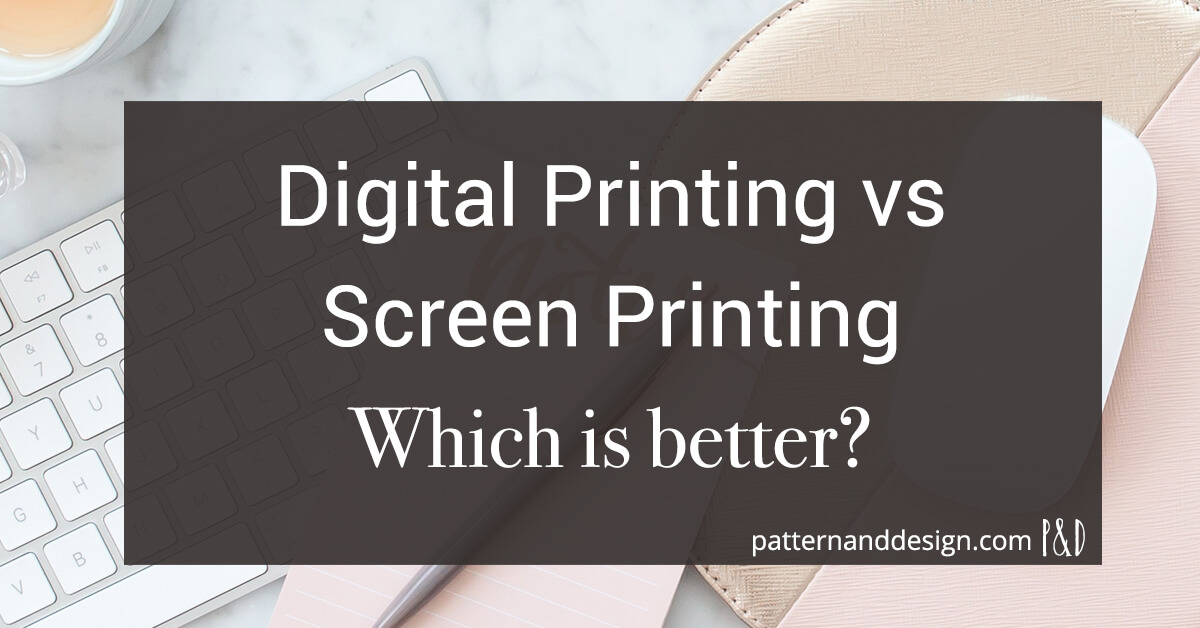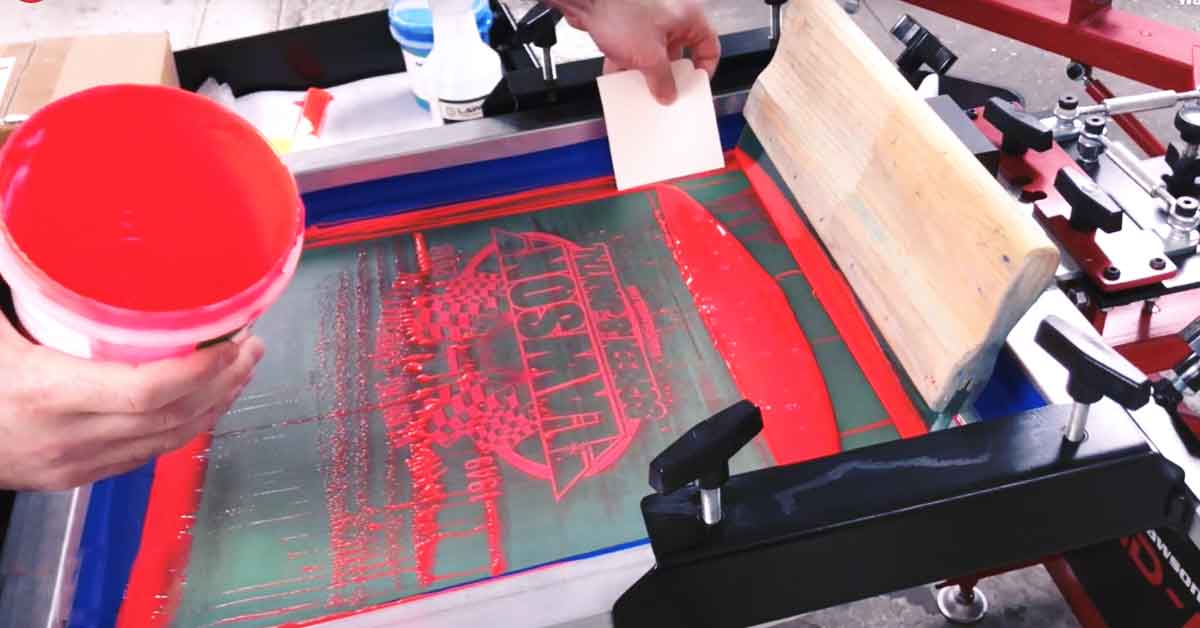The Facts About Tx Tees Revealed
Table of ContentsTx Tees Fundamentals ExplainedThe smart Trick of Tx Tees That Nobody is DiscussingA Biased View of Tx TeesThe Only Guide for Tx TeesThe Only Guide for Tx Tees5 Simple Techniques For Tx TeesWhat Does Tx Tees Do?
That brings your total amount to roughly $1,900 gross and delivery. Build up various other expenses, like the variety of utilities it takes to run the store and the expense of ink and solution per design. screen printer. Take the print listed below. This is a one-color photo, so the price of ink per tee shirt is roughly 20 cents.The solution must just be a couple of cents given that you 'd only need to coat one display for this task. Generally, printers attempt to make up to 45% revenue on a print job.

With DTF, you can publish a handful of tee shirts, or just one. Utilize the very same calculator as the section above to calculate exactly how much earnings you would certainly make using DTF transfers. Compare the prices and revenues to whichever method speaks ideal to your configuration and process. Both screen printing and DTF have their niches worldwide.
Tx Tees Things To Know Before You Buy
The best means to know? Ask about and see what print stores like yours are doing. custom screen printing. Try both out and see which you like far better
When you're choosing what kind of printing approach to use for printing your art work styles on your garments, it's important that you understand the differences between these two techniques so you can maximize outcomes while decreasing prices. Screen printing is the most generally made use of method for printing layouts on textiles.
DTG printing is likewise understood as place or direct to garment printing because it prints only what is needed instead of making a screen as screen printers do. https://www.storeboard.com/txtees. Display printing functions by display filler squeegee display printing ink display mesh screen, then moving the photo to garment using warmth and/or pressure
The DTG printer makes use of unique dye-sublimation inks that are used into a pre-designed photo by an electronic printing system. The inks come to be component of the material, permitting vivid shades and remarkable detail. It's also called spot or straight to garment printing because it publishes only what is required as opposed to making a display as display printers do.
Tx Tees Fundamentals Explained
First, it's much quicker - you can publish a fullcolor photo in minutes, as opposed to hours for display printing. Second, there's no set up time or costs entailed - you can publish any kind of layout you such as, without having to create a screen initially. Third, there's no waste - due to the fact that screen printers display print one design at a time, they have to screen each color separately.
The paper is extremely expensive and can just be made use of as soon as. Once it's published on, it needs to be discarded. - The initial purchase price is reduced than the upfront investment of DTG printers- You can print multi-color designs one screen at once as opposed to having to publish each color individually like DTG printing.

Tx Tees for Beginners
Instead of using screen mesh as screen printers do, dye sublimation printers utilize laser innovation to transfer your images onto garments or paper. A warm procedure moves the dye from its solid-state directly right into the gas stage which consequently integrates it onto material substratums when they are rapidly warmed to heats under high stress.
Sublimation printing is eco-friendly. It utilizes much less water than screenprinting, and since it does not entail the use of harmful find out solvents, it's risk-free for all kinds of apparel. The dye sublimation inks are additionally odor-free when healed, unlike display printers that use harmful chemicals during the display printing process that leave behind an unpleasant smell.
They also save cash on pricey devices like exposure devices because dye sublimation printers don't need a UV exposure system or a flash treatment stove that is generally utilized in screen printing (embroidery shop). What is straight to garment printing (DTG Printing)? DTG printing is a digital screenprinting process that prints directly onto material making use of specialized inkjet printers
Everything about Tx Tees
DTG printing provides several benefits over conventional screenprinting, consisting of the capability to publish photographic quality images, better shade vibrancy, and the capacity to print layouts on darker textiles. DTG printers function by heating up the textile ink until it turns into a gas. The gas after that permeates the fabric, bonding with the fibers to develop a long-term print.

Screen printers just prepare their screen after that start printing till they run out of product or ink.- There is a wide variety of seasoned screen printers throughout the globe, which can be helpful for newbies. - It's a slower procedure - screen printers frequently have to wait on the ink to completely dry before they can publish the following shade- Display printers need hands-on labor, so there's a greater discovering curve and it takes longer to generate a premium style- Screen printing isn't as exact as DTG printing, so you might obtain some "bleeding" of shades from one part of the image onto another otherwise done effectively.
What Does Tx Tees Mean?
Instead of making use of display mesh as display printers do, color sublimation printers utilize laser modern technology to move your images onto garments or paper. A warmth process moves the color from its solid-state directly into the gas stage which in turn fuses it onto fabric substratums when they are swiftly warmed to high temperatures under high stress.
Sublimation printing is eco-friendly. It uses less water than screenprinting, and since it doesn't involve making use of hazardous solvents, it's risk-free for all kinds of apparel. The dye sublimation inks are also unsmelling when treated, unlike display printers that utilize dangerous chemicals throughout the screen printing process that leave an undesirable smell.
They likewise save cash on pricey equipment like exposure units because dye sublimation printers don't require a UV direct exposure device or a flash remedy oven that is generally made use of in screen printing. What is direct to garment printing (DTG Printing)? DTG printing is an electronic screenprinting process that prints directly onto textile using specialized inkjet printers.
An Unbiased View of Tx Tees
DTG printing uses lots of benefits over standard screenprinting, consisting of the capability to print photographic top quality photos, higher color vibrancy, and the capacity to print designs on darker materials. DTG printers work by warming the fabric ink until it transforms into a gas. The gas then penetrates the textile, bonding with the fibers to create a permanent print.